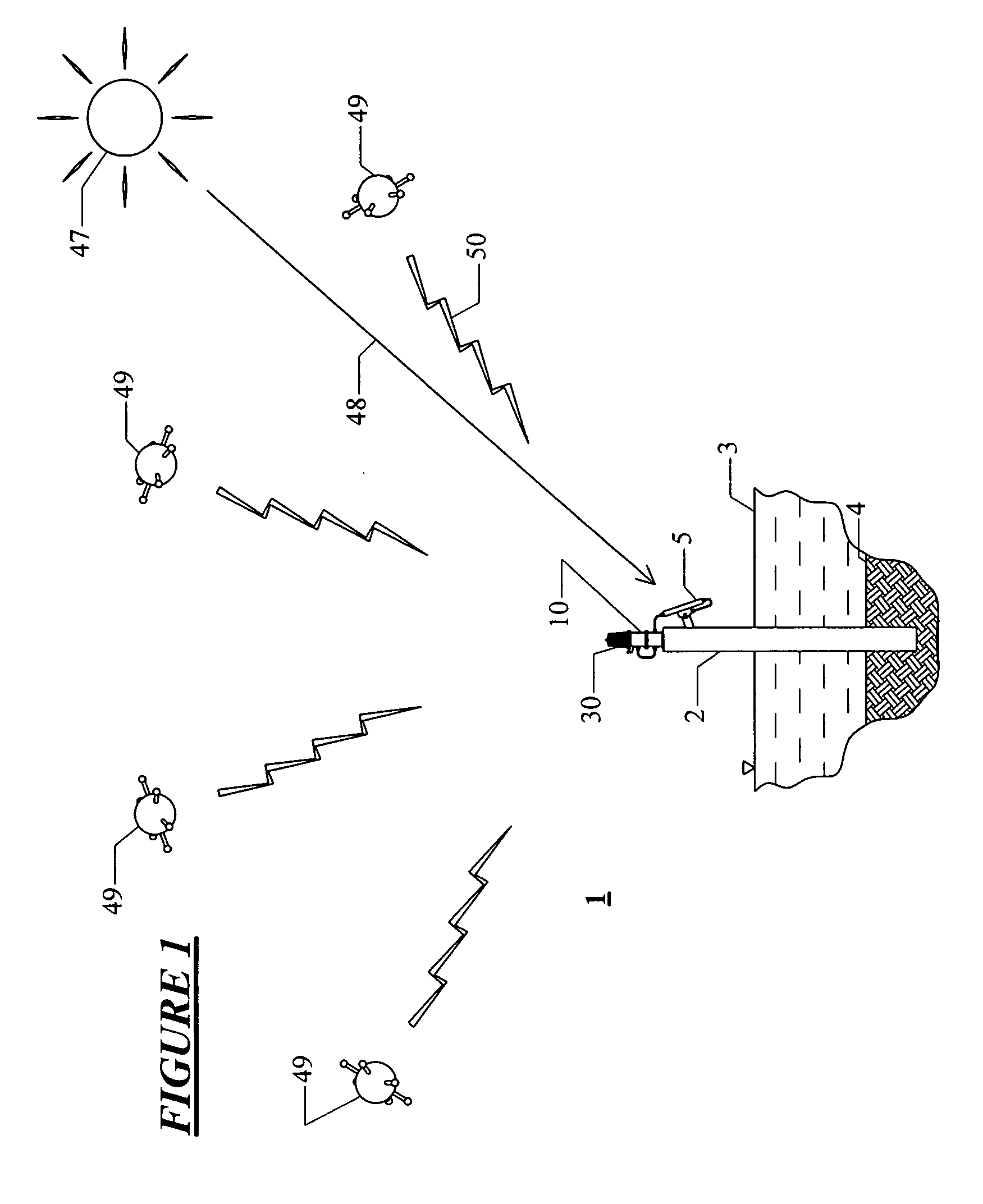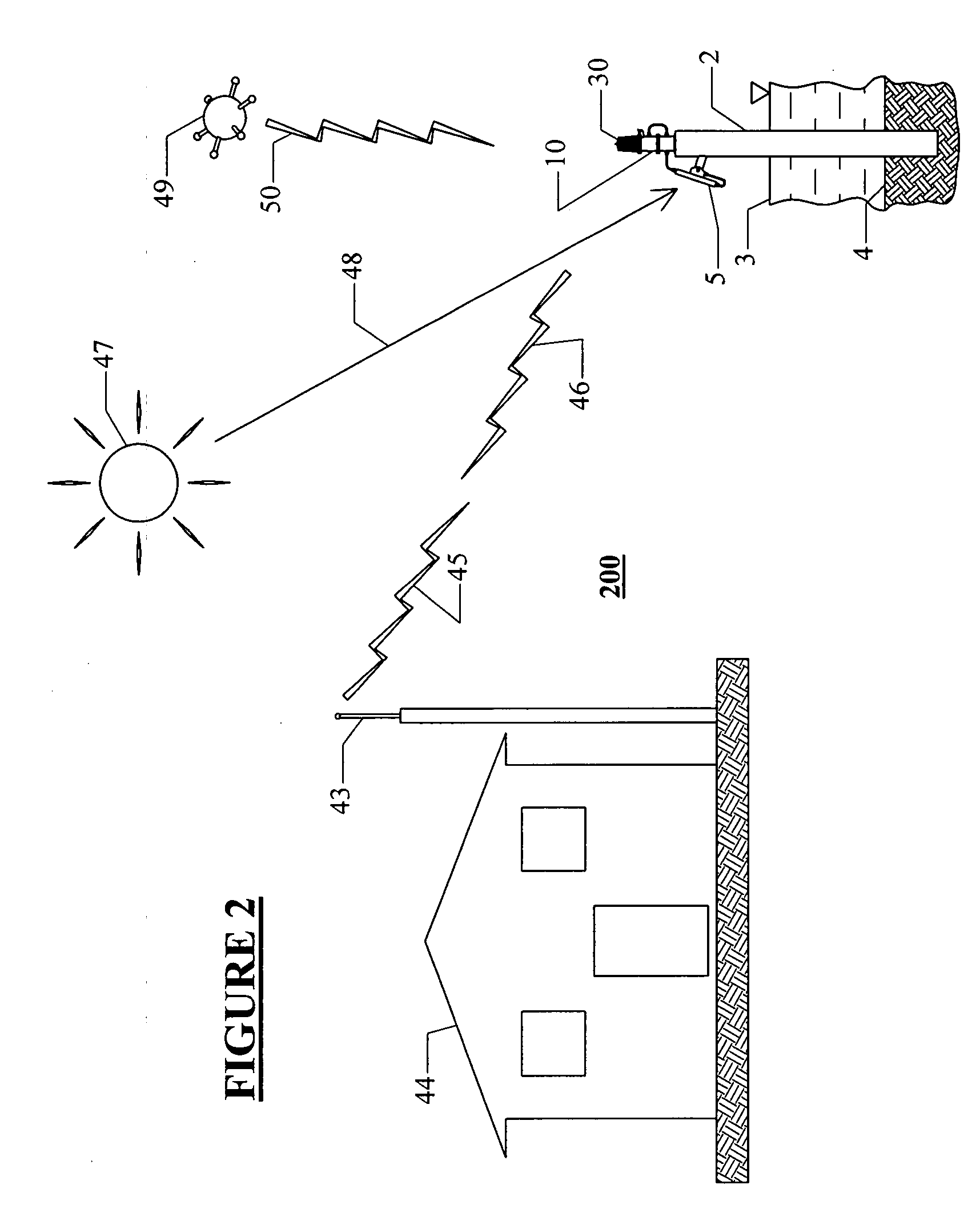Marine lantern controlled by GPS signals
a technology of gps signals and marine lanterns, applied in the direction of electric lighting with batteries, lighting and heating equipment, instruments, etc., can solve the problems of reducing the solar energy collected by the solar cells for a temporary period, requiring considerable prior knowledge of the local, and reducing the solar energy collected by the solar cells. , to achieve the effect of optimizing the energy collection
- Summary
- Abstract
- Description
- Claims
- Application Information
AI Technical Summary
Benefits of technology
Problems solved by technology
Method used
Image
Examples
first embodiment
of the Lighting System
[0035]FIG. 1 shows a first embodiment of the lighting system 1 which includes the lighting device 10 of the present invention, wherein by way of example the lighting device is located on a vertical offshore piling structure 2 which is surrounded by water 3 and embedded in the seabed 4. The lighting device 10, shown in more detail in FIGS. 3 and 4, is attached rigidly to the upper end of the piling 2 sufficiently far above the surface of the water 3 that it is above splashing from passing wave crests at high tide during storms. Alternatively, the lighting device 10 can be positioned on a variety of other types of structures.
[0036]The electrical power necessary to operate the lighting device 10 is provided by a solar collector panel 5, which is able to collect and convert solar energy to electricity. Solar collector 5 is used to charge a battery or batteries 41 (shown in FIG. 5) in a battery case 6 integrally mounted with the lighting device. The collectors of th...
second embodiment 200
[0066]FIG. 2 shows a second embodiment 200 of the lighting system which includes the lighting device 10 of the present invention using a different controller assembly 240. As seen in FIG. 2, lighting system 200 externally uses the same basic arrangement as the first embodiment lighting system 1, but with the addition of means for interacting by two-way radio transmissions with a remote base station 44. By way of example, the remote base station 44 is shore based and has transceiving radio antenna 43 which is able to transmit radio signals 45 for reception by the controller assembly 240 of the lighting system 200. Additionally, the controller assembly 240 for the lighting device 10 is able to transmit outgoing radio signals 46 for reception by the antenna 43 of the base station 44.
[0067]Referring to FIG. 7, the interrelationship of the functional components of the controller assembly 240 of the lighting device 10 of the lighting system embodiment 200 may be seen sch...
PUM
 Login to View More
Login to View More Abstract
Description
Claims
Application Information
 Login to View More
Login to View More - R&D
- Intellectual Property
- Life Sciences
- Materials
- Tech Scout
- Unparalleled Data Quality
- Higher Quality Content
- 60% Fewer Hallucinations
Browse by: Latest US Patents, China's latest patents, Technical Efficacy Thesaurus, Application Domain, Technology Topic, Popular Technical Reports.
© 2025 PatSnap. All rights reserved.Legal|Privacy policy|Modern Slavery Act Transparency Statement|Sitemap|About US| Contact US: help@patsnap.com



